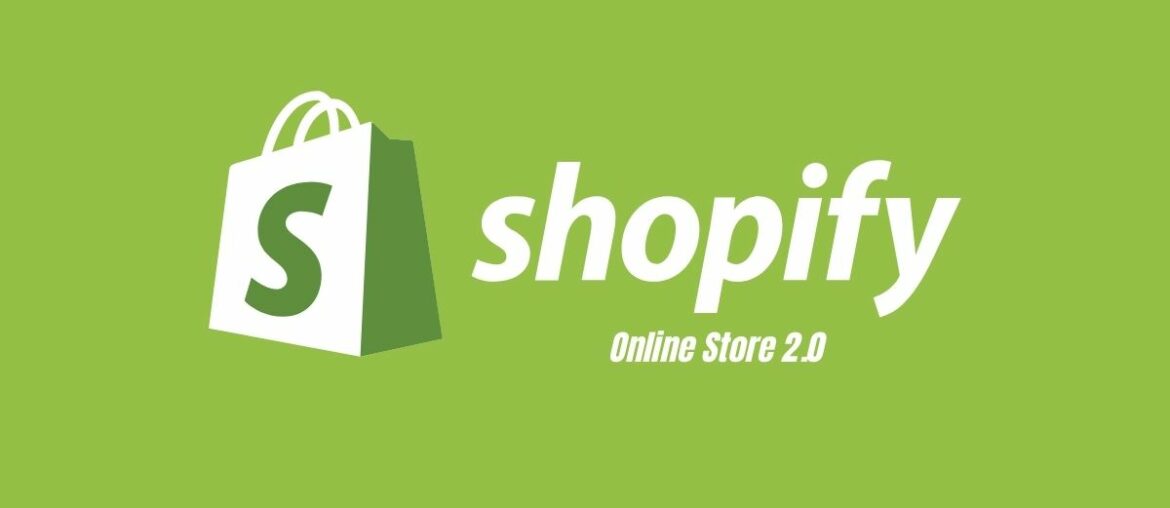In 2020, more than 450 million people made purchases on the Shopify ecommerce stores. The company processed the GMV (Gross Merchandise Volume) of more than $120 billion. It clearly shows that the e-commerce stores built on Shopify are in huge demand, which will sustain for an extended period.
More than six months since Shopify announced many new features to make the platform more customizable. There are many new features and themes that you will get with Online Shopify 2.0. Shopify has said that the Online store 2.0 is the fruit of the most rebuild of the language it uses for template the building the Liquid language.
The internet is the world’s largest city, and Shopify is building its commerce infrastructure. Especially over the past year, we saw independent businesses succeed by showing up creatively and uniquely in this city. The future of commerce on the internet relies on creative expression at every touchpoint. Together with developers, we are building the infrastructure to make this possible.
Tobi Lütke, CEO of Shopify
For starters, the new set of features will make it easy for the developers to add customized features to the storefront. The first e-commerce store of Netflix – Netflix.shop has been created on the Shopify OS 2.0.

This article will go through a brief overview of what Shopify OS 2.0 means for us.
What Is Shopify Online Store 2.0?
The first thing you will encounter is Shopify OS 2.0 is the fresh editing experience. Online merchants can quickly build storefronts from scratch using this new editor. They can add several theme extensions and also manage apps within the themes. Presently, the new editor has centralized all the features and functionalities. Compared to the old default theme, Debut, Dawn, the new storefront theme is 35% faster.
Shopify has signed up its infrastructure investments and developer tooling. Shopify’s online store owners don’t have to encounter the roadblock of re-platforming to build headless commerce storefronts or customize the storefronts.
This new revolutionized Shopify OS is highly focused on making the platform more visible to developers and tech giants. We embrace the Shopify OS 2.0 as it gives the freedom to create, customize, scale, and monetize on Shopify.
Shopify New Theme “Dawn” Architecture
In the old version of Shopify, merchants had limited availability of blocks inside the store. There were different templates in the store earlier. These templates were mapped to different products, and the new sections can be added only on the Homepage. However, in the new Shopify OS 2.0, the Shopify retailers can create new sections on every page and are not limited to the Homepage like earlier.
The templates can be activated for each page using JSON template files that specify the settings for the page. Here you can list all the sections & collections of the page, custom pages, blog posts, and many other things. It lets you define those sections which will be displayed using the files of the JSON template.
The new Dawn theme architecture also runs fast than the old Debut theme. Thus, if you switch to Shopify OS 2.0, you will be enjoying a faster-performing site. However, the new theme is not constrained to just improving the site’s speed.
Here Is What Else You Will Get Or What You Are About To Use:
| Feature | Vintage themes | Dawn theme |
|---|---|---|
| Built for desktop and mobile | Yes | Yes |
| Customizable using the theme editor | Yes | Yes |
| Supports multiple languages and currencies | Yes | Yes |
| Customizable sections | Homepage only | Yes |
| Collection page filtering | By product tag only | Yes |
| Simplified color scheme | Yes | |
| Optimized for speed | Yes | |
| Defined sections for app content | Yes | |
| Natively supports dynamic sources for meta fields | Yes |
The new theme gives you a high level of editing power. You can organize each element of the store in hierarchical ways.

Theme App Extensions With App Blocks In Shopify Online Store 2.0
The developers can add various features using the extensions for the theme. Thus, the functionality of the site can be extended with the theme app extensions.
Earlier, it wasn’t possible to integrate apps with themes. Due to this, the developers have to code integration logic for existing themes. Thus, it was difficult to develop features that could work smoothly on different themes. Now it is no longer the case.
App Modularity In Shopify Online Store 2.0
App Modularity is another big highlight. The developers will add or remove any UI component using the theme editor. They don’t need to access the code of the theme.
It becomes simpler to manage an app’s supporting assets. You can easily manage the apps supporting purchases using Shopify 2.0 and easily host them on the platform.
Metafields Changes In Shopify Online Store 2.0
In the latest theme editor, merchants can add meta fields and properties without using any API or any form of coding.
As a Shopify store owner, you can easily add content to the product page, introduce spacing for adding more information to attract buyers like any size chart, ingredient list, etc. Anything that ostensibly does not appear on the store editor can be updated through the meta field. Here are the different ways to modify the meta field:
Some Of The Best Ways To Make Changes In The Meta Fields Are:
- Flexibility: There is great flexibility in the Metafields for safely importing the commerce data.
- Standard Meta Fields: To make it simpler for custom themes to start working, Standard meta fields are used across market verticals.
- Presentation Hints: Presentation hints are added to meta fields for rendering store data.
File Picker In Shopify Online Store 2.0
There are many different types of media files that are now supported by Metafields, such as images, PDFs, etc. You don’t need to hard-code any file to a theme. You can upload the selected media file to the product pages using the meta field file picker. The images are accessible through the path of settings/files.
If you want to display a warrant or sizing chart on the product description page, the file picker allows you to choose that file with simple UX. That’s the reason the meta field is placed inside the theme itself.
Files API In Shopify Online Store 2.0
The 2021-07 API version allows you to use File API for creating, updating, and deleting generic files. Thus, the Shopify merchants can reuse different files for other apps. These will be added to the files page inside Shopify admin.
The Shopify developers will access the settings/files through the new Files API. In this version, you will also find the GraphQL API to upload media files through settings/files easily. Apps can access this particular area in the backend while populating meta fields through content.
This gives multiple opportunities for apps to utilize the space for files and images which aren’t linked with the product, including images used in themes.
Liquid Input Setting In Shopify Online Store 2.0
The liquid input setting is another update in Shopify OS 2.0, which allows adding custom Liquid code to pages from the editor. It is just like the HTML setting, but the difference is that you get access to Liquid variables. Both the global and template-specific Liquid objects are accessible by the merchants.
The Liquid input setting exonerates the merchants from changing the code of the theme to add code for apps using Liquid. They can use the developer documentation or view the new theme from Dawn’s custom-liquid section.
You can make independent decisions about the store as a developer freeing you to focus on creative and business decisions.
Shopify GitHub Integration
The integration with GitHub makes the integration and development of the theme easier for you to track changes and manage. Firstly, the online store will be connected to the GitHub account. When the developer makes a change, it will be first pushed to GitHub, and after that, it will be pulled to a repo that will be in sync with the selected theme’s current state.
This integration with GitHub ensures the connection of the Shopify admin with the user account and connects GIT branches to themes in the store. The version control feature of GitHub support allows for making, tracking, and managing changes in the theme code.
The development team can easily collaborate safely by editing themes by version control. They can implement workflows while working on the merchant store. The changes are first viewed and merged on GitHub in the version control and then are pushed on the live theme.
Shopify CLI
Shopify CLI tool has also been updated in the Shopify OS 2.0. Earlier, the developers used the CLI tool to generate Node.js and Ruby on Rails apps. However, now it is possible with CLI to develop custom themes.
Here are a few features, App developers will get by the new Shopify CLI:
- Create, preview, and test changes to themes
- The dev server lets you reload CSS and Liquid section changes
- Develop a new theme project using the Dawn theme
- Use the command line to publish and push themes
In the admin area of the Shopify OS 2.0, the development themes are hidden, so you don’t need to worry that any site visitor to the store will see your site on the hidden theme. It is possible to see the changes in the theme by the development themes developed locally in real-time, interact with the theme, and customize the theme with the theme editor. With the new CLI tool, you get a huge control of how the final theme will display.
Theme Check In Shopify Online Store 2.0
Theme check scans the developed theme for errors. It is a very important component for Liquid and JSON. After completing the scan, the tool will show you the best practice for the Shopify platform and Liquid language. It identifies the issues in the code. To easily understand the issues that persist, error messages with a link to failed check appear.

Wrapping Up
In this article, we have gone through all the different features of Shopify OS 2.0. This new OS will not just improve the performance of your Shopify store but will let you customize the theme and add new features as well. Hire the best Shopify development company, that has expertise in developing Shopify stores from scratch using the latest Shopify OS.





 USA
USA UK
UK